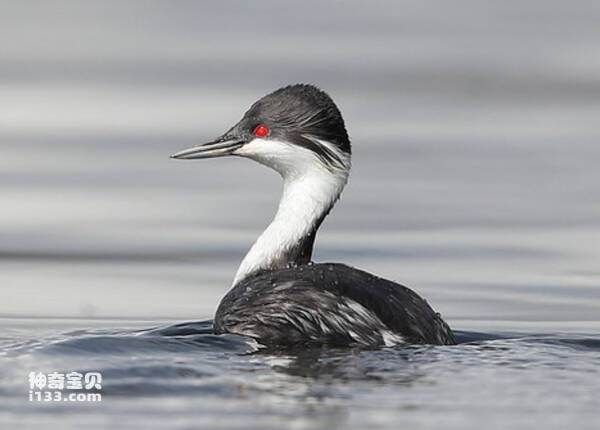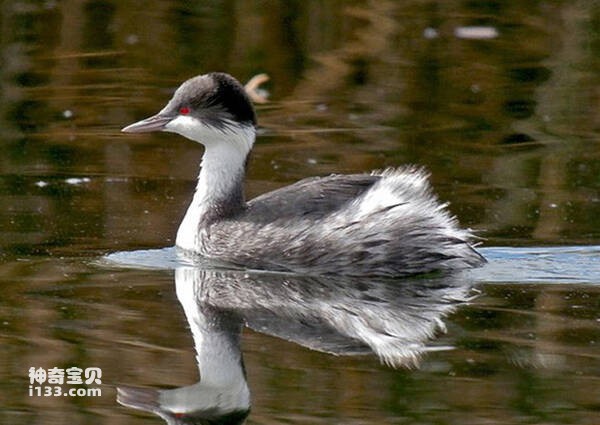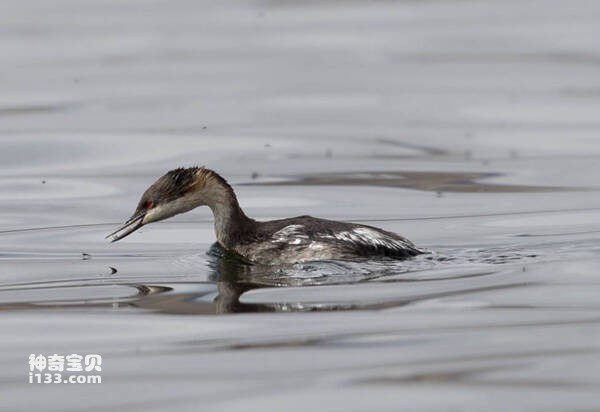diceps taczanowskii
IUCN
LCBasic Information
Scientific classification
- name:diceps taczanowskii
- Scientific Name:diceps taczanowskii,Junin Grebe,Junín Grebe,Puna Grebe
- Outline:Waterfowl
- Family:
Vital signs
- length:33-38CM
- Weight:No textual research information is available
- lifetime:No textual research information is available
Feature
The species' scientific name "taczanowskii" and the French name "Grebe de Taczanowski" are both in honor of the Polish zoologist "Wladyslaw Taczanowski".
Distribution and Habitat
It is found only on Lake Junin in the Junin Plateau of west-central Peru.
It inhabits the plants of freshwater lakes and swamps and lives almost all its life in the water. Lake Junin, where they live, covers an area of about 140 square kilometers and is quite shallow, with a depth of 5-10 meters. At 4,080 meters above sea level, it is surrounded by extensive reed swamps.
Appearance
The Peruvian grebe is 33-38 cm long. Males and females have similar plumage, but males are larger than females. The Peruvian grebe in breeding plumage is off-white with white undercheeks, throat, neck, and chest. The rest of the base color is grayish white, and the sides were SLATE gray. The inner cover of the wings is white, the outer cover is gray, and the secondary cover is mostly white. Dark gray to black on the crown, forehead to below the eyes. There are elongated feathers on the earmuffs, mixed with some small silver feathers to form tufts that hang backward to the top side of the neck. The nape is dark gray to black, narrowing in the upper center and extending to the rest of the nape while widening.
The species has a short, mostly black-gray beak, sometimes with a darker mandible and a lighter tip. The iris is bright red, and the inner ring is lighter and more yellow. Legs and feet light greenish-gray, sometimes orange-yellow. Slightly paler in non-breeding plumage. There ar
Details
Peruvian Grebe (Podiceps taczanowskii) : Junin Grebe, Junin Grebe, Puna Grebe, no subspecies.

The Peruvian grebe feeds mainly on small fish of the genus Osemion, which make up 90% of its diet. They also eat aquatic insects and larvae, crustaceans, mollusks and grass.

The Peruvian grebe nests in the vast reeds bordering Lake Juning during its breeding season. Perform some courtship displays at the beginning of the breeding season. Two Peruvian grebes face each other while rapidly turning their heads from side to side. This display is called a "swing head" and is usually accompanied by a call. The breeding season takes place between late November and the rains of the following March, peaking in December-January. Up to 20 pairs nest together in breeding areas, 2-4 metres apart. They build floating nests among the tall sedges and reeds on the shore of the Juning Lake. The nests are made of reeds, weeds and some clay, and are attached to the reeds. Each brood usually produces 2-7 eggs, which are incubated by male and female in turn, and hatched after about 25 days. The nestlings become pregnant early and have dense velvet feathers, which are gray with light stripes, while the underbody is white. Within 2-3 weeks of hatching, the chicks are free to move around, and the parent birds often carry them on their backs, or carry them under their wings when they are frightened. Breeding success depends on the water level, and when the lake is particularly low, it is impossible to breed young birds.
The Peruvian Grebe is found only in Lake Juning. It is subject to water pollution from mining activities and extreme water level fluctuations lead to deterioration of water quality. Water level regulations for hydroelectric plants that power nearby mines have caused nesting and foraging areas to dry out and breeding to fail. The northwest was rendered lifeless by iron oxide deposition. The lake is also polluted by sewage from nearby towns, which has led to eutrophication and oxygen depletion, and may have reduced the number of fish available for the Peruvian grebe to feed on. The relatively unstable climatic conditions associated with the El Nino Southern Oscillation event may have led to large fluctuations in species numbers, recovering somewhat in years with high water levels (e.g., 1997-1998), and in 1982, many Peruvian Grebe died in extremely cold conditions. A similar situation in June 2007 caused concern.
Because the Peruvian Grebe has experienced a significant population decline, only a few adult populations remain. New extrapolations using different methods were estimated at 205 individuals in early 1995. In August 1998, more than 250 birds (estimated to be 350-400 birds in total) were found in a 4 square kilometer area of the lake. Statistical estimates using standardized survey methods for 2001, 2002 and 2007 put the number of species at 304, 249 and 217, respectively (Organization for Economic Cooperation and Development, 2009). The August 2014 and August 2015 censuses counted 315 and 238 birds, respectively. Numbers are in the 50 or 249 range and are still falling. Different survey methods make estimating species numbers difficult. However, surveys conducted between 2007 and 2016 indicate that the population is between 217-468 individuals, equal to approximately 145-312 mature individuals.

The Peruvian Grebe is listed as critically endangered, and although Lake Juning has been declared a national nature reserve, where hunting and fishing are managed, the management of water levels is not well controlled.
Junin Lake has been declared a national nature reserve by Peru. Hunting and fishing are regulated, but little has been done to interfere with water level management, which is controlled by mining companies. There have been attempts to move the Peruvian Grebe to a lake north of Junin. Fishing and diversion is possible, but the choice of other lakes should be suitable, and no gillnets should be used to catch rainbow trout. In 2002, the Peruvian government passed an emergency law to protect the lake, which mandated its cleaning and placed greater restrictions on water access. In 2009, the species was adopted as a symbol of wetland conservation in the High Andes by Bird Conservancy International, American Bird Conservancy, and others, who called for an independent environmental audit and ongoing environmental monitoring of the lake (BirdLife International 2009). ECOAN (Andean Ecosystem Association) has been taking conservation action, including a range of education and training activities with local communities, as well as research and monitoring of the species' population size and potential threats (ECOAN 2016).
Monitor species numbers and reproductive success. Study the needs of species throughout their life cycle. Protect the clean waterways that flow into Lake Juning and improve legislation and enforcement to prevent lake pollution. Engage in dialogue with local stakeholders to identify and reduce sources of pollution. Reduce water level fluctuations caused by hydropower dam discharges with the consent and participation of local mining companies. Identify a potential individual translocation lake and consider establishing a captive breeding population. Development of ecotourism in the area, including the establishment of a monitoring platform for the lake to help with species population monitoring.
Listed in the International Union for Conservation of Nature Red List of Threatened Species (IUCN) for 2019 ver 3.1 - Critically Endangered (CR).
Protect wild animals and eliminate wild meat.
Maintaining ecological balance is everyone's responsibility!








